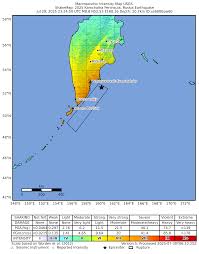Understanding Russia’s Earthquakes and Tsunami Threats

Introduction
Recent seismic activity in Russia has brought renewed attention to the country’s vulnerability to earthquakes and potential tsunamis. With its extensive coastline along the Pacific Ocean and numerous tectonic fault lines, understanding these natural disasters is crucial for both local residents and global observers. This article delves into recent earthquake events, the potential for tsunamis, and the implications for the regions affected.
Recent Earthquake Events
On September 21, 2023, a significant earthquake measuring 6.8 on the Richter scale struck the Kamchatka Peninsula, prompting significant concern across the region. The earthquake occurred at a depth of 40km and was felt widely across various coastal cities. While initial reports indicated structural damage, particularly to older buildings, local authorities confirmed a swift emergency response to ensure public safety.
Potential Tsunami Threat
In the aftermath of the Kamchatka earthquake, the Pacific Tsunami Warning Center issued a tsunami advisory. Due to the quake’s offshore epicentre, there were fears of localised tsunamis impacting coastal communities. Fortunately, these warnings were lifted after a careful assessment indicated that wave heights were not significant enough to cause harm. However, this incident served as a critical reminder of the potential for tsunamis in the region.
Impact on Local Communities
The earthquake shook many communities in the region, where residents have become increasingly aware of the seismic risk. Emergency preparedness drills and educational programs have gained momentum, with local governments focusing on enhancing infrastructure resilience. The sheer scale and unpredictability of such natural disasters highlight the importance of proactive measures taken by authorities in Russia’s vulnerable areas.
Conclusion
The seismic events in Russia underscore the critical need for ongoing vigilance and preparedness when it comes to earthquake and tsunami risks. As climate change continues to impact natural disaster patterns, authorities must invest in better infrastructure and community awareness programs. For residents and researchers alike, understanding these phenomena is essential not just for immediate safety but for long-term resilience against future disasters. As such, ongoing monitoring and responsive strategy adjustments will be vital for managing these natural threats effectively.
